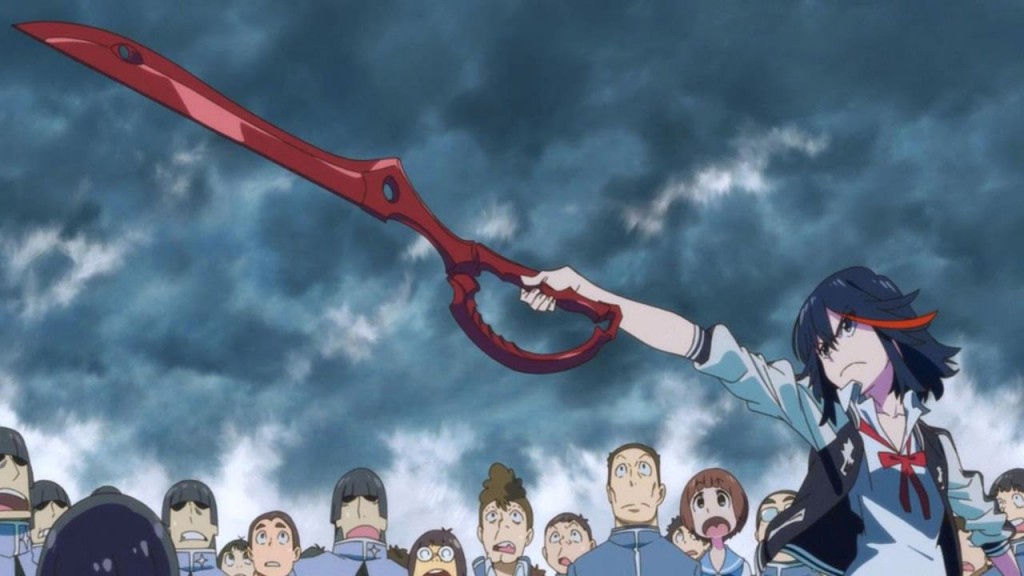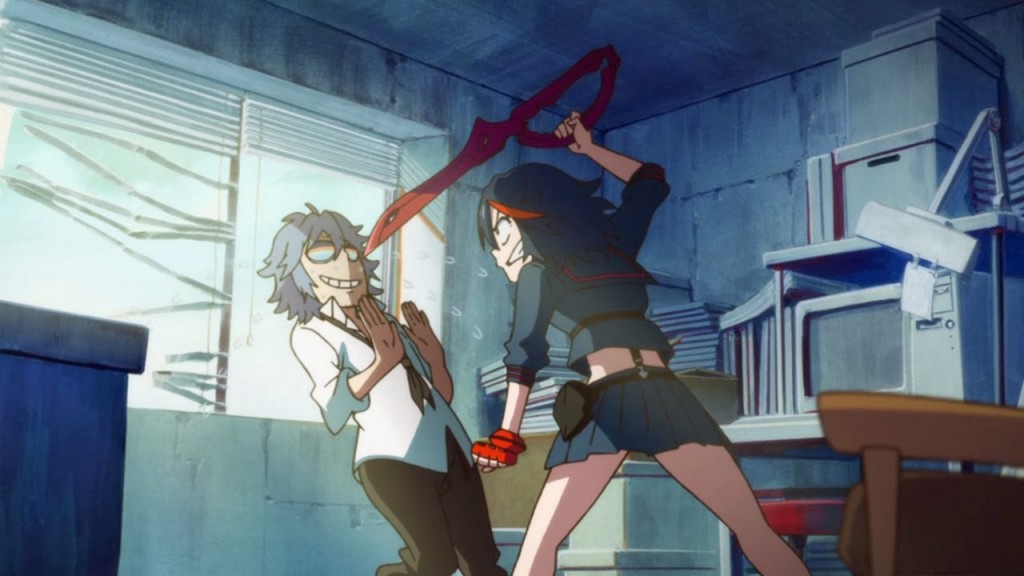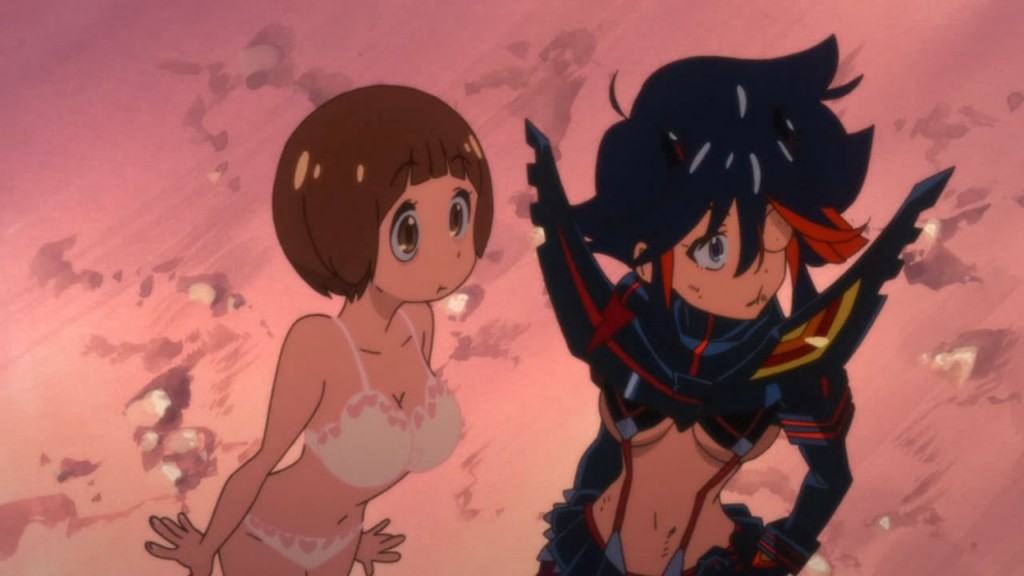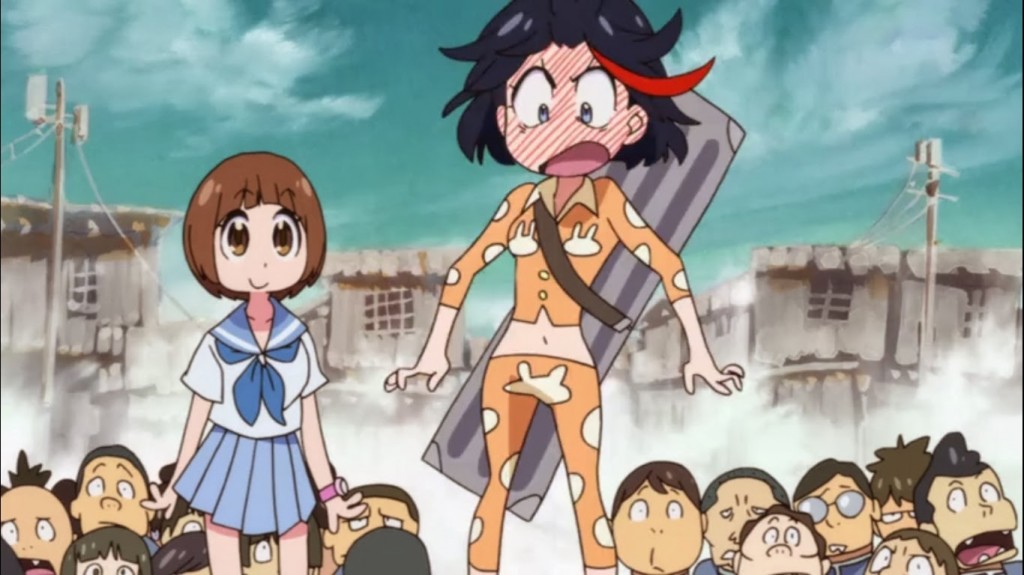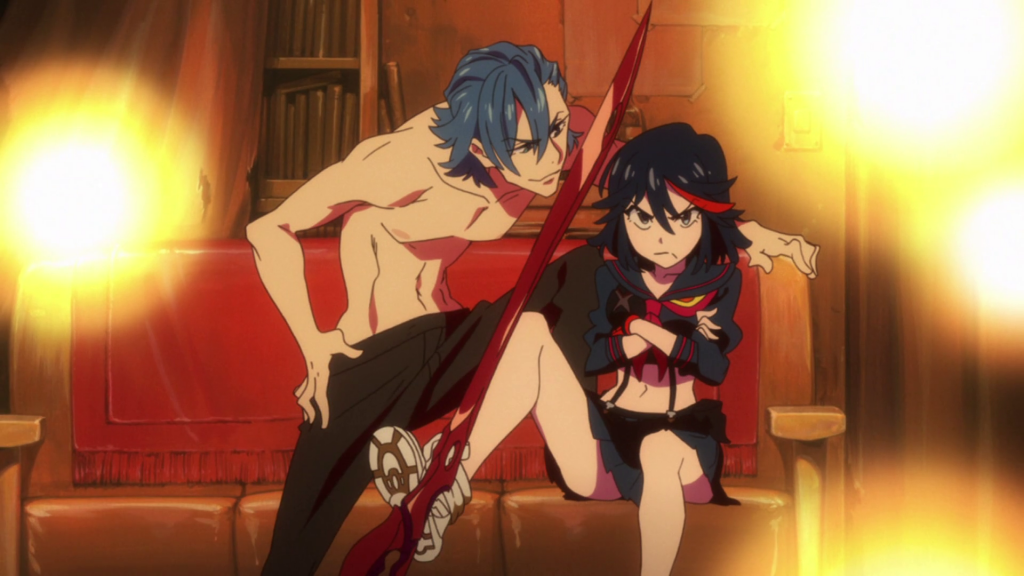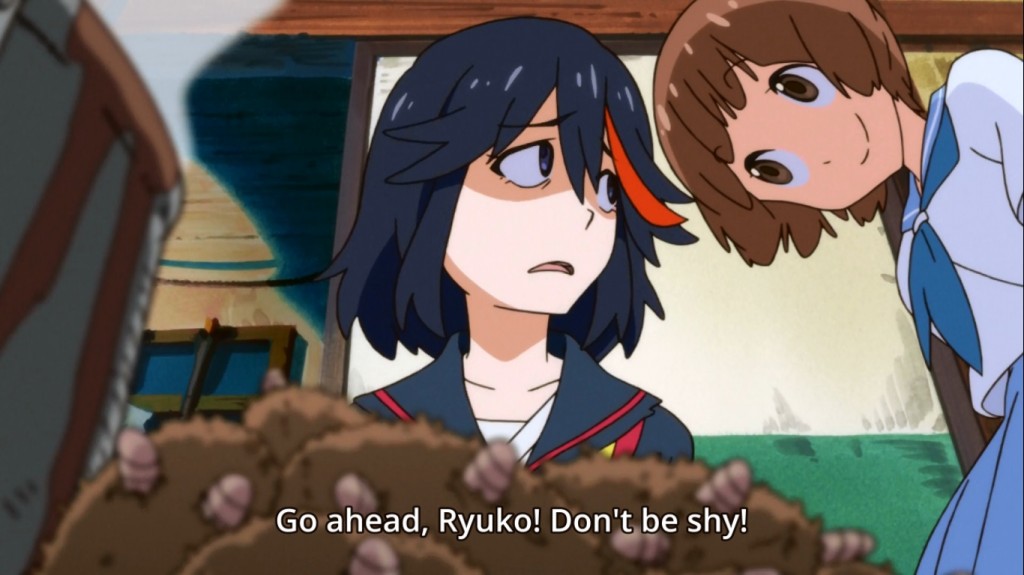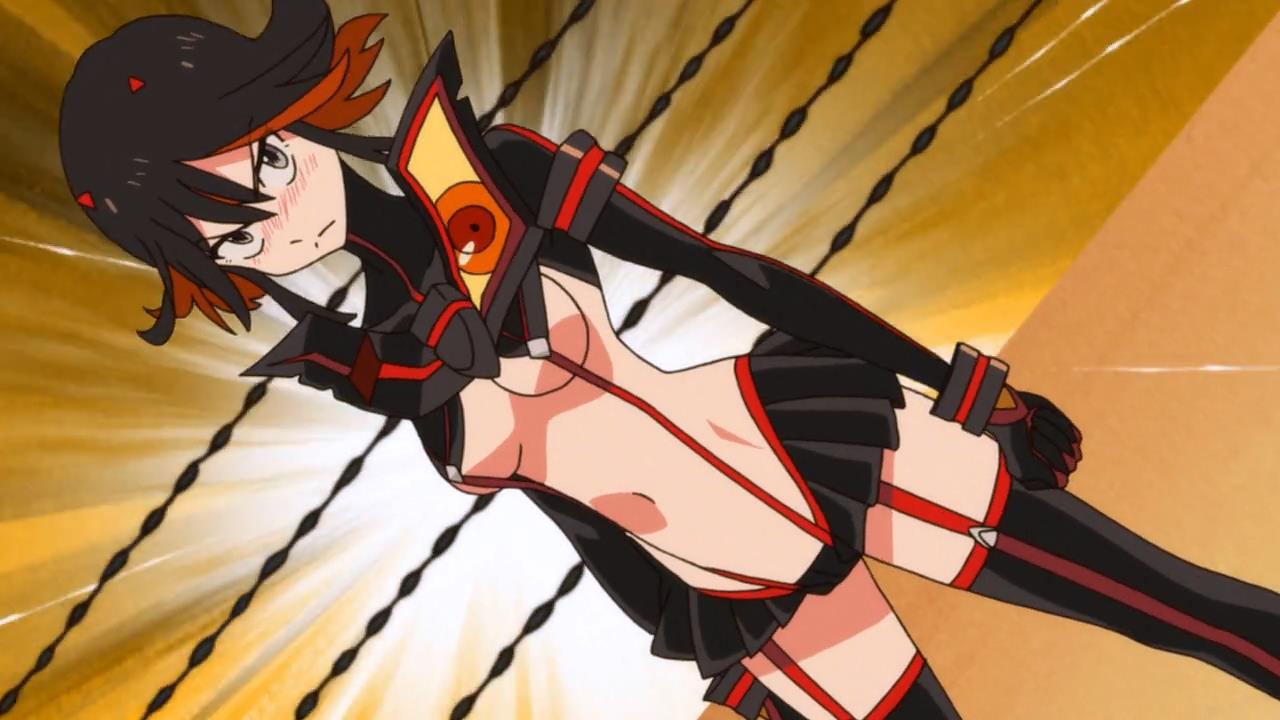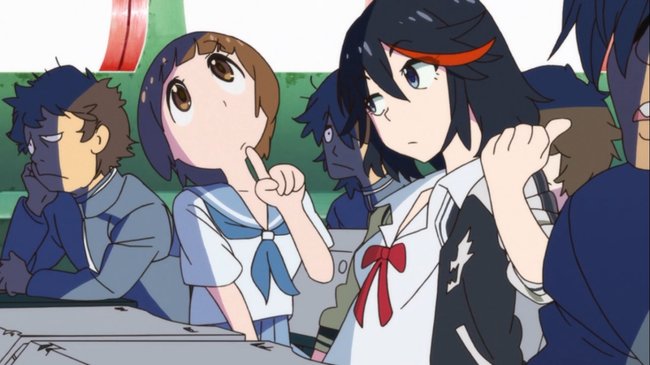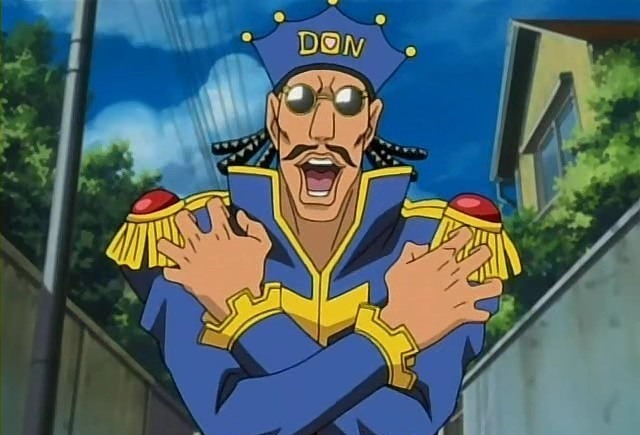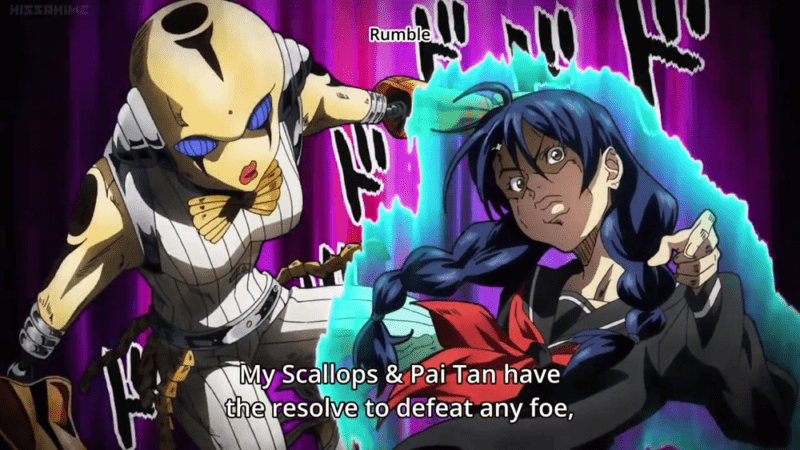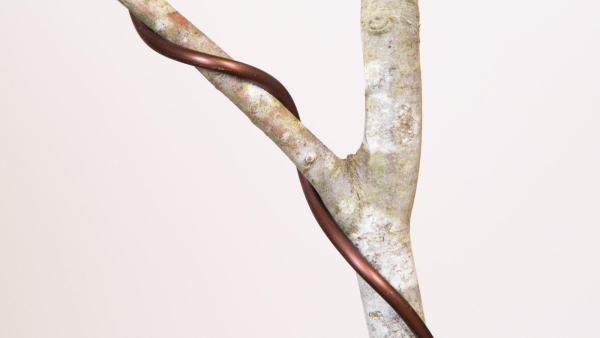I was hesitant toward Kill la Kill when I first started watching it. First, the style of the humor tends to turn me off. The obsession with frantic humor is something I cannot understand. Next, the level of fan service turned me off. The skimpy uniforms and creepy come-ons by the teacher Aikuro Mikisugi toward the protagonist Ryuko Matoi was off putting. The environment of the anime was nonsensical. Honnouji Academy was a school that had special uniforms made out of a material called Life Fibers that boosted a student’s natural abilities to superhero levels. For example. a kendo student became an unstoppable sword master. Of course, when the uniforms transformed they grew tiny and barely decent on the girls. To be fair, some of the guys also had this happen.
The story follows Ryuko as she challenges the leadership of the Honnouji Academy (the class president, not the principle) in an effort to learn who killed her father. She ends up finding one of her father’s inventions, a sentient sailor uniform called Senketsu, who gives her the ability to challenge the schools uniformed superheroes in duels. Ryuko stays with the Mankanshoku family, a poor family that provides most of the frantic comedy.
Despite the turn offs, I stuck with Kill la Kill and was surprised by the layers the anime had. Aside from the interesting art style and compelling action sequences, the ridiculousness of Kill la Kill points at some ridiculousness on the part of modern society that we often miss. The anime was also self aware and pointed out how nonsensical it was. Anyway, Kill la Kill points out several factors about modern society and media by taking those factors to satirical extremes.
Skimpiness in Clothing Equals Power
Ryuko is constantly embarrassed by Senketsu’s (the name of her school uniform) transformation. The uniform essentially becomes a tiny G-string with shoulder pads and a skirt that is barely there. Of course, this is animated with boob jiggle. However, this is a common trend among all the girls and some of the guys (excluding the boob jiggle animation) whenever they transform into their battle modes. This echoes a trend in video gaming where armor sets with the highest defense tend to have the most skin exposed. This is particularly true of female characters.
Next, it points to how much power sexuality has in modern culture. Everywhere you look are advertising with scantily clad men and women (mostly women) selling everything from food to toilet tissue. Even as Senketsu bares Ryuko’s midriff, you can see midriffs being used to sell ideas and products. A set of good abs is a powerful message of health, power, strength, and sexuality. Look at how many supermarket magazines focus on ab exercises. Sex sells. In Kill la Kill, sexuality (in the form of uniform transformations) is used to further political and personal agendas.
Later in the series, the main antagonist reveals her plot to fully enslave people to clothing. This is already done in our world by the proliferation of fashion standards and judgments posed on people by how they dress. This brings me to the next point.
Clothing Denotes Caste
A caste is any group of people who are perceived as socially distinct from another. A class is a way of dividing people into sets based on a person’s caste. In Kill la Kill, the type of Life Fiber uniform a student wears determines both the student’s and their family’s social standing. At the top are 3-star uniforms. At the bottom are no-star uniforms. The no-star level are the vast majority and live life on a subsistence level. As you go up the hierarchy, families get richer. Kill la Kill reverses how class and clothing are related.
In our world clothing reflects a person’s social standing, in Kill la Kill, a person’s social standing reflects their clothing. However, Kill la Kill’s world is actually closer to how we treat people. We tend to treat people in suits better than those in holey jeans and a ratty T-shirt. Never mind the fact that the person in a suit may well have no money at all and the person in the jeans may be a millionaire. Kill la Kill points out how how foolish these judgments are. In fact, by the end of the anime, everyone is naked. Social standing then comes down to personal abilities and character.
The anime’s fixation on clothing is little different from how we fixate on it. The anime’s ridiculousness points to how ridiculous it is to pass a snap judgment on a person by what they are wearing. In Kill la Kill, Ryuko’s uniform looks weak compared to those of the Elite Four in the school. However, her ability and character proves the snap-judgment wrong. Ryuko even goes beyond her uniform and challenges the antagonist’s power in her underwear. This points to how it much her character contributes to her ability to challenge the powers that be.
Kill la Kill has other obvious messages such as the corrupting influence of wealth. However, I found the satire and commentary on just how much importance we place on clothing (and the lack thereof) interesting. As an anime, Kill la Kill has its own unique style. The humor is not my cup of tea. The action sequences are done in an interesting and exciting art style. The hand drawn feel of the anime is appealing. Although I didn’t care for the humor, it was well balanced with the action and story telling.
Ryuko’s relationship with her uniform Senketsu is interesting as well. It speaks about the love/hate relationship most of us develop with clothing and the meanings people place on what we choose to wear or not wear. Ryuko develops a friendship with Senketsu. In many ways Senketsu becomes a reflection of Ryuko’s character. This relationship points to how people relate character with clothing. A guy sagging his pants is viewed as less against a guy dressed in a crisp polo. A girl that wears a short skirt is viewed as a slut compared to a girl wearing a knee length skirt. Clothing is seen as a reflection of the person wearing it.
I did not expect Kill la Kill to have deep satirical elements. Kill la Kill is actually a well put together action anime that pokes fun at itself and the modern world. It is a surprising look at things we don’t consider. Even if the writers do not intend this anime to be commentary, it still points to many issues of making assumptions of people based on clothing.
